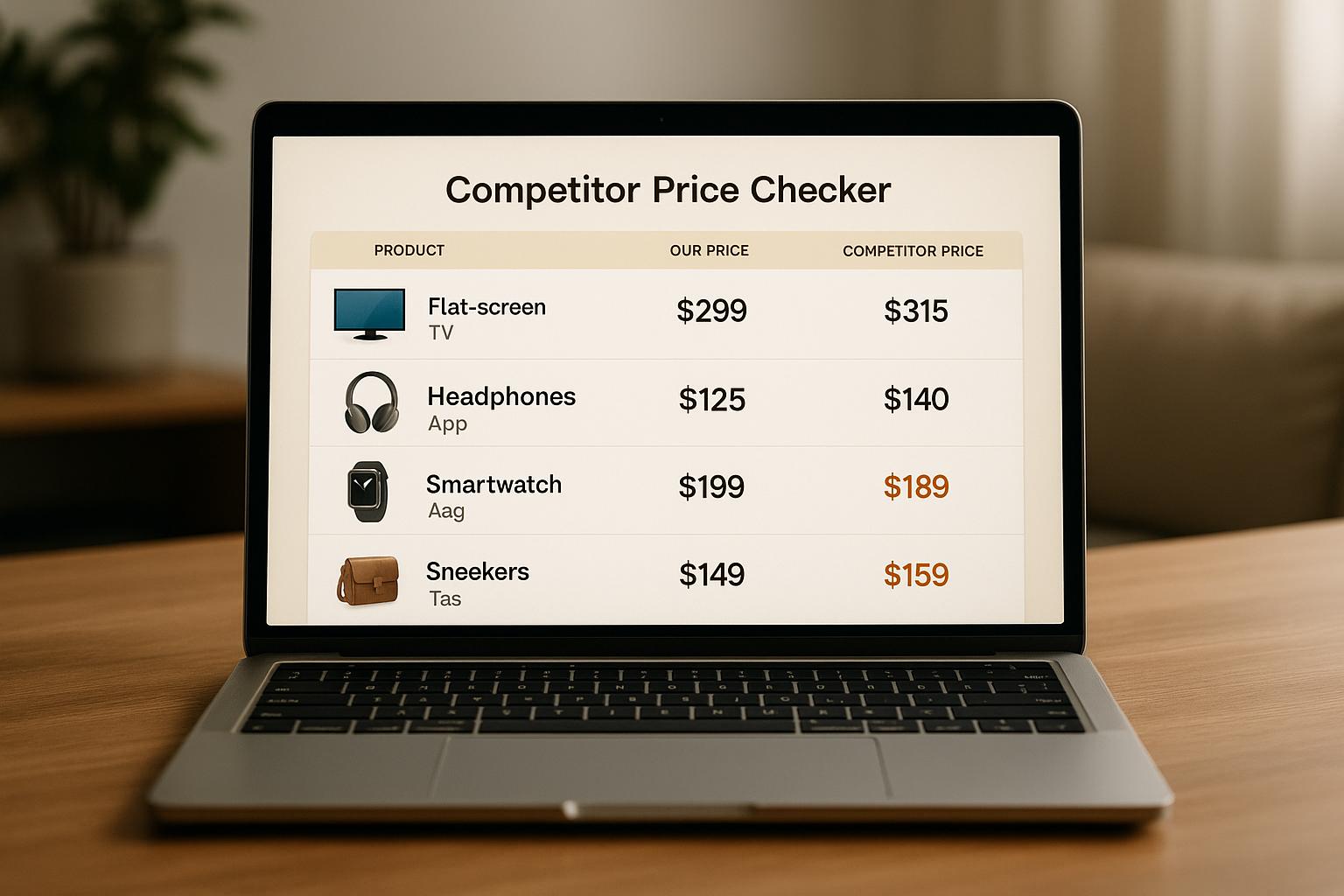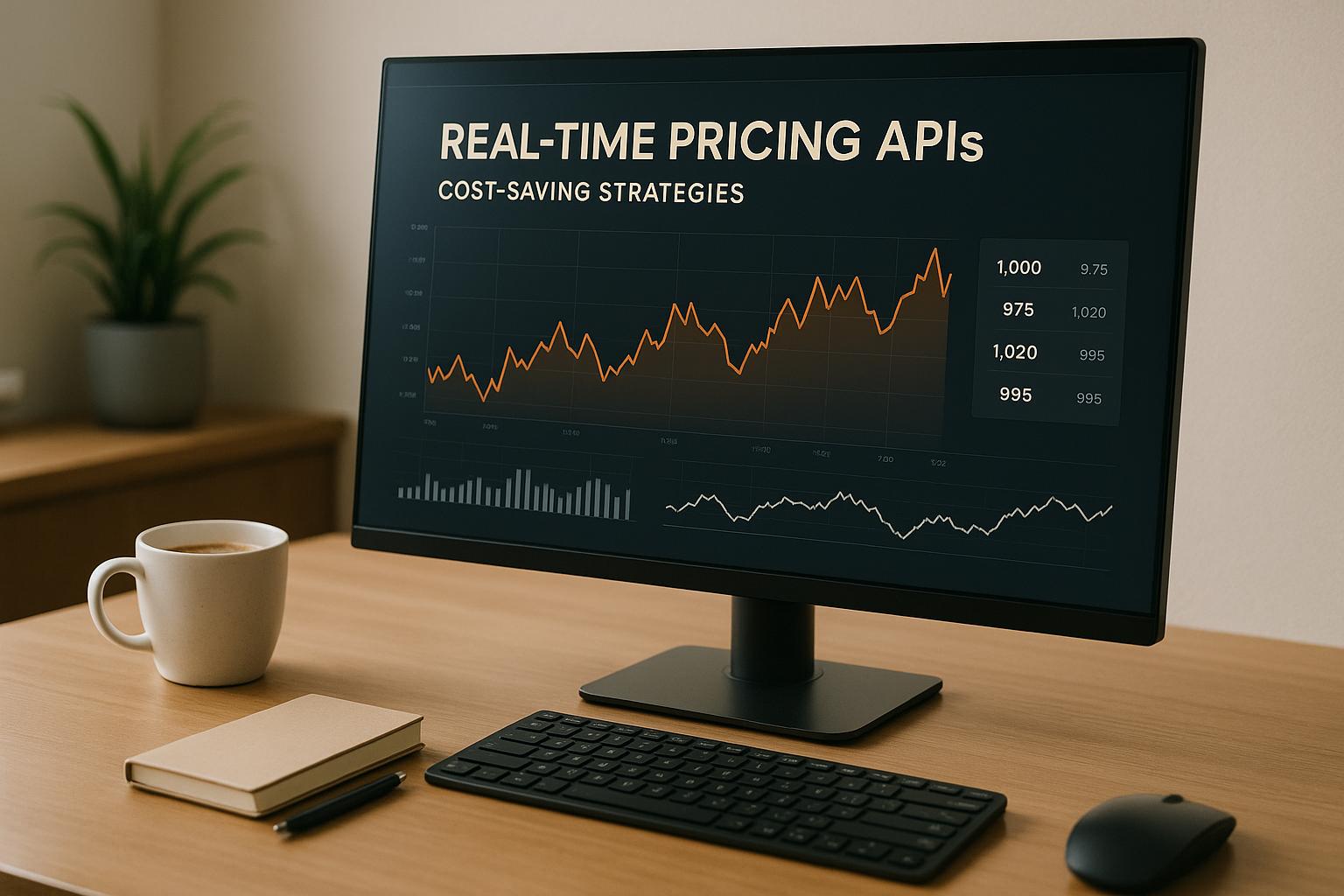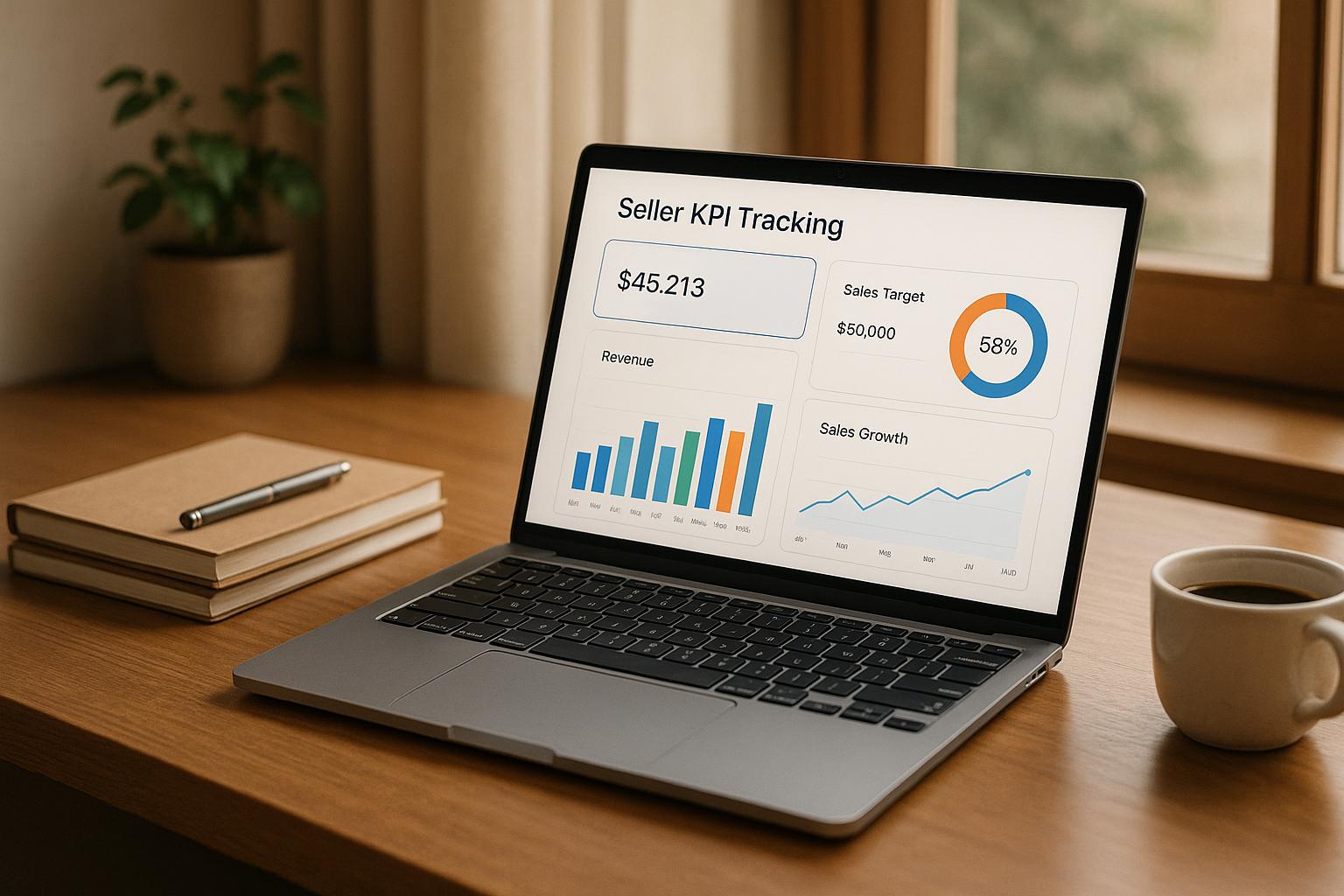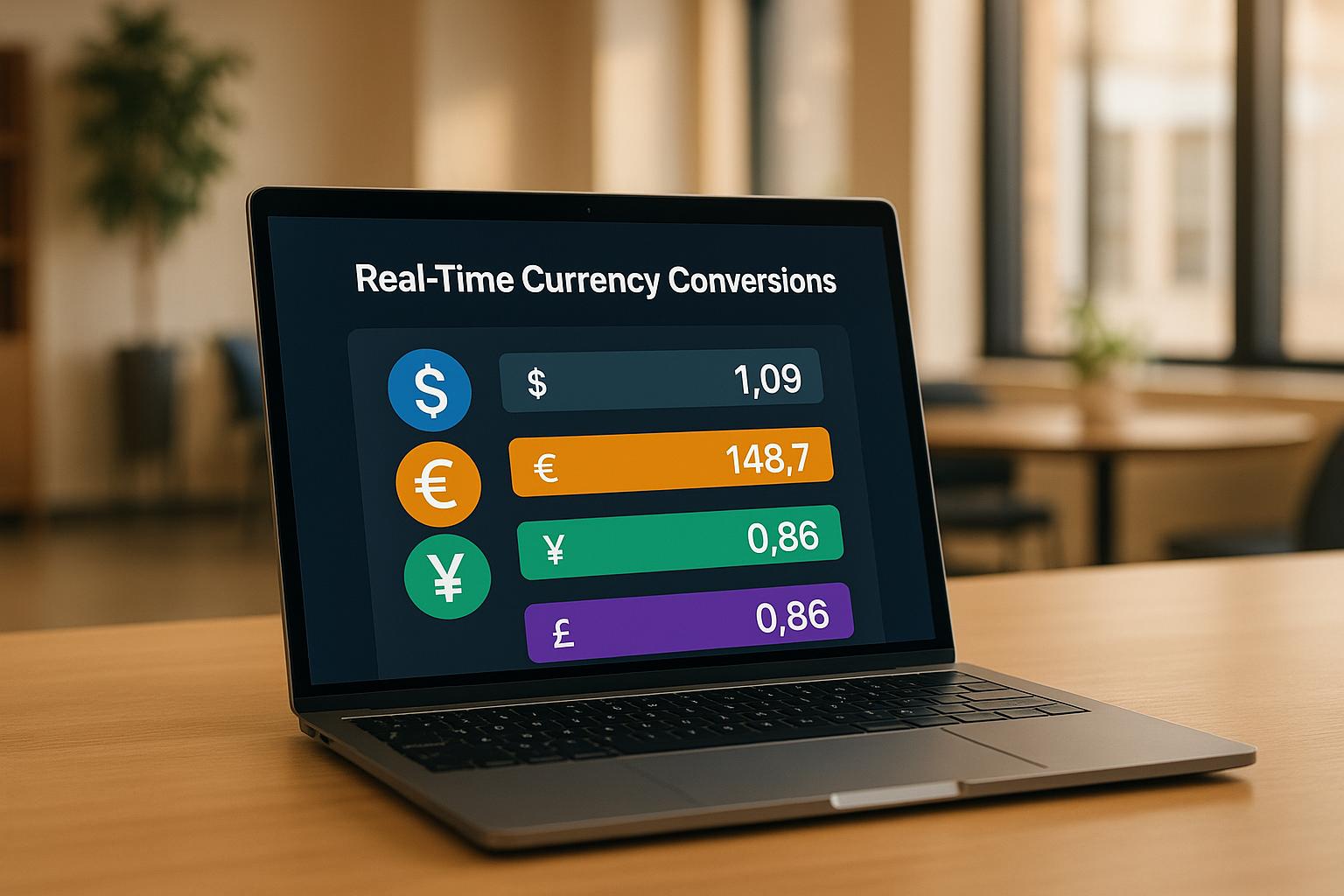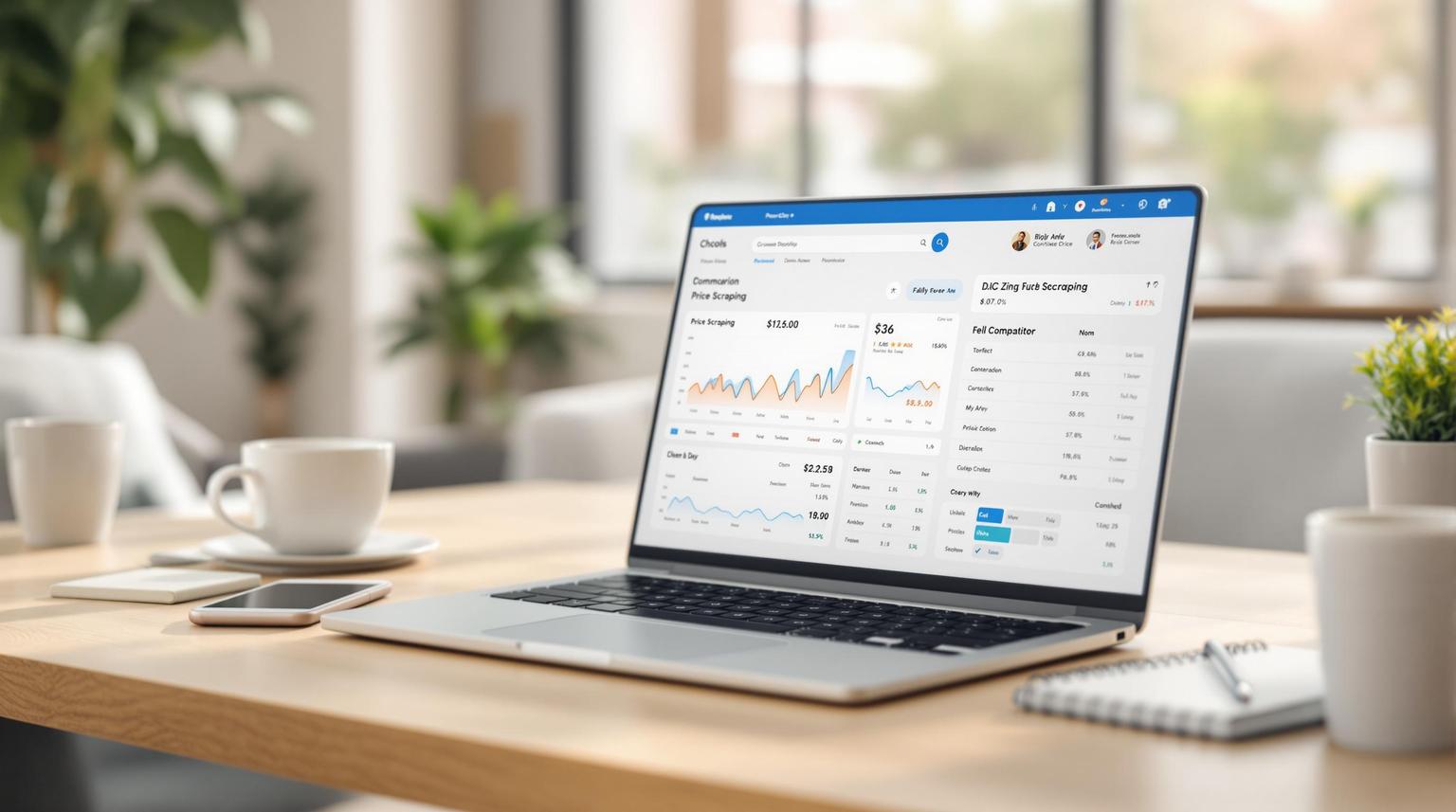Ultimate Guide to Scaling E-Commerce Data Scraping

March 31, 2025
E-commerce data scraping is essential for staying competitive. This guide explains how to scale your operations effectively while solving common challenges like managing large datasets, bypassing website restrictions, and optimizing performance. Here's what you'll learn:
- Core Setup: Build scalable infrastructure with cloud resources, request queuing, and modular design.
- Performance Tips: Use async methods, optimize hardware, and fine-tune spider settings.
- Overcoming Barriers: Handle rate limits, proxies, CAPTCHA, and ensure data quality.
- Storage Solutions: Compress data, choose the right database, and partition datasets.
- Monitoring: Track errors, automate maintenance, and ensure uptime.
Quick Comparison: Cloud-based scraping outperforms local setups in scalability, cost, and reliability. Use dynamic scaling and regional distribution to handle peak loads and improve success rates.
Start small, refine your processes, and scale gradually for better results. Tools like ShoppingScraper simplify these tasks, helping you collect accurate, real-time data efficiently.
Core Infrastructure Setup
Setting up a reliable infrastructure is crucial for large-scale e-commerce data scraping. It ensures efficient data collection while making the best use of available resources.
Managing Multiple Requests
Handling multiple requests effectively is essential for scalable scraping. Here's how it can be done:
- Request Queuing: Use priority-based queues to handle time-sensitive data collection.
- Rate Control: Adjust the frequency of requests to align with the limitations of the target website.
- Load Distribution: Spread requests across multiple endpoints to avoid overloading any single one.
For example, platforms like ShoppingScraper use these strategies to manage concurrent requests across more than 40 countries on Google Shopping. This structured approach also supports asynchronous processing, cutting down on collection time.
Async Scraping Methods
Asynchronous processing allows operations to run simultaneously, improving performance and efficiency. Key techniques include:
- Event-Driven Architecture: Processes data without interruptions, sharing resources effectively.
- Parallel Processing: Executes multiple scraping tasks at the same time.
These methods not only speed up data collection but also help maintain system stability.
Separating Data Discovery and Extraction
Dividing scraping into two distinct phases - Discovery and Extraction - helps optimize resource use and improve error handling:
| Phase | Function | Benefits |
|---|---|---|
| Discovery | Identifies product URLs and categories | Minimizes duplicate scans and improves crawl paths |
| Extraction | Gathers detailed product data | Allocates resources to collecting key information |
To implement this:
- Modular Design: Develop independent components for each phase.
- Data Pipeline: Create workflows that connect discovery and extraction seamlessly.
- Caching Strategy: Use smart caching to avoid unnecessary requests.
Integrating a RESTful API, like the one from ShoppingScraper, can simplify this separation process and ensure data remains consistent throughout the collection phases.
Performance Optimization
Performance optimization fine-tunes resource use and improves scraping efficiency. By combining the right hardware, spider settings, and data management strategies, you can significantly enhance your scraping operations.
Hardware Requirements
Scaling e-commerce data scraping requires reliable hardware. Below is a suggested configuration to meet performance needs:
| Component | Minimum Requirement | Recommended Specification |
|---|---|---|
| CPU | 4 cores, 2.5GHz | 8+ cores, 3.5GHz or higher |
| RAM | 16GB DDR4 | 32GB+ DDR4 |
| Storage | 512GB SSD | 1TB+ NVMe SSD |
| Network | 100Mbps | 1Gbps+ |
For better load distribution during peak times, deploy multiple machines across different regions.
Spider Configuration
Fine-tuning your spider's settings ensures smoother scraping operations. Here are some key configurations to keep in mind:
- Request Timing: Space out requests by 1–3 seconds to avoid detection.
- Connection Timeout: Set a 30-second timeout to handle unresponsive servers.
- Concurrent Requests: Limit to 8–12 requests per domain to prevent overloading target servers.
- Memory Management: Run garbage collection after every 1,000 requests to free up memory.
- User-Agent Rotation: Rotate user agents every 50–100 requests for better anonymity.
If you're using ShoppingScraper’s API, it can automatically adjust these settings based on server load and website behavior.
Data Storage and Compression
Managing large volumes of scraped data efficiently is critical. Here are some approaches to streamline storage and maintain data accessibility:
- Compression: Use GZIP compression on JSON files to reduce size without slowing down processing.
-
Database Selection: Match your storage system with your data type for optimal performance:
Data Type Recommended Storage Benefits Product Details Document Store (e.g., MongoDB) Flexible schema and fast queries Price History Time-Series Database Ideal for handling time-based data Category Data Graph Database Better for mapping relationships -
Data Partitioning: Organize large datasets effectively by:
- Partitioning by date
- Sharding across multiple servers
- Indexing frequently queried fields
Bypassing Website Restrictions
Once you've set up a reliable scraping system, the next challenge is navigating website restrictions to keep your data collection running smoothly.
Proxy Management
A strong proxy network is essential. Use a mix of proxy types based on your needs: residential proxies for sensitive data, datacenter proxies for broader tasks, and mobile proxies for dynamic pricing scenarios. Rotate your IPs frequently, maintain separate proxy pools for each target website, and keep an eye on proxy performance by setting short timeout limits.
Tools like ShoppingScraper take care of proxy rotation automatically, ensuring steady access while mimicking normal browsing traffic. With effective proxy management, you can avoid detection and keep your operations running smoothly.
Natural Request Patterns
Managing proxies is just one part of the equation. To stay under the radar, you need to replicate natural browsing behavior. This includes varying the time between requests, adding pauses during sessions, and randomizing the number of items viewed in a single visit. For example, start scraping from category pages, paginate with irregular intervals, spend time on individual product pages, and occasionally revisit categories.
These small adjustments make your activity look more like a regular user and less like a bot.
CAPTCHA Solutions
Dealing with CAPTCHAs is a common hurdle when scraping e-commerce sites. You can tackle this by using methods like machine learning, OCR technology, or browser automation. Set up automatic retries with short delays, refresh sessions when CAPTCHA challenges increase, and cache valid session tokens for reuse.
ShoppingScraper simplifies this process with a built-in CAPTCHA handling system. It manages these challenges efficiently, keeping success rates high while maintaining realistic traffic patterns.
sbb-itb-65e392b
Cloud-Based Scraping
Cloud infrastructure provides powerful tools for e-commerce data scraping. Here's how to make the most of cloud resources for scalable and efficient scraping.
Cloud vs. Local Scraping
Cloud-based scraping offers clear advantages over traditional local setups. With cloud infrastructure, you gain access to scalable computing resources, distributed IPs, and built-in fail-safes. Here's a quick comparison:
| Aspect | Cloud Scraping | Local Scraping |
|---|---|---|
| Scalability | Instantly adjustable resources | Limited by hardware |
| Cost | Pay-as-you-go pricing | High upfront costs |
| Maintenance | Managed by providers | Requires manual upkeep |
| IP Distribution | Multiple regions supported | Single location |
| Reliability | Automatic failover systems | Prone to single failures |
These differences highlight why cloud setups are ideal for large-scale operations. Platforms like ShoppingScraper handle these complexities for you, so you can focus on gathering data, not managing servers. Let’s dive into how dynamic scaling makes cloud scraping even more efficient.
Dynamic Resource Scaling
Smart resource management is critical for cost-effective scraping. Use dynamic scaling to adjust cloud resources based on:
- Peak traffic: Boost capacity during busy periods.
- Data loads: Add processing power when dealing with larger datasets.
- Slow response times: Increase resources when target sites slow down.
- Low activity: Scale down during off-peak hours to save money.
Set up automated triggers to handle these adjustments. For example, if response times exceed 2 seconds, increase processing power. When CPU usage drops below 30%, reduce resources to cut costs.
Multi-Region Setup
Spreading your scraping operations across multiple regions enhances reliability and lowers detection risks. Here's how to implement a multi-region strategy:
- Choose regions close to your target websites and route requests through dedicated proxy pools for each area.
- Balance the workload across regions to maximize performance.
- Align scraping locations with your target markets.
- Monitor performance in each region to track metrics like response times, success rates, and error rates.
ShoppingScraper simplifies this process by optimizing regional routing, ensuring smooth and reliable data collection no matter where your targets are located. Use the insights from regional monitoring to refine your strategy and keep operations running efficiently.
These cloud-based methods, combined with active monitoring, ensure your scraping infrastructure remains reliable and scalable.
System Monitoring
Keep track of your scraping operations with these essential tools and strategies:
Error Tracking
Stay ahead of issues by monitoring key metrics that could disrupt data collection. Here's what to watch:
| Metric | Target Range | Recommended Action |
|---|---|---|
| API Response Time | Less than 4 seconds | Check for network or server load issues |
| System Uptime | More than 99% | Evaluate infrastructure stability |
ShoppingScraper comes equipped with monitoring tools that provide detailed error messages and status codes, making troubleshooting easier. Plus, failed requests won’t count against your quota.
Use this data to quickly address problems and maintain smooth operations.
Problem Solving
Follow these steps to tackle issues effectively:
- Use error logs to pinpoint problems
- Address specific issues based on status codes
- Confirm fixes using the monitoring dashboard
ShoppingScraper also includes error-handling guidelines to help diagnose common challenges, such as network connectivity problems or parsing errors.
Automated Maintenance
Schedule system diagnostics and data collection with automated endpoints. This ensures reliable performance and helps detect potential issues early.
Conclusion
Key Points Summary
Scaling e-commerce data scraping involves combining strong infrastructure, performance improvements, and dependable monitoring systems. Key factors to focus on include:
| Component | Key Considerations |
|---|---|
| Infrastructure | Cloud-based solutions with flexible resource allocation |
| Performance | Efficient request patterns and data compression techniques |
| Monitoring | Real-time error tracking and automated system maintenance |
| Data Quality | High accuracy at the EAN/GTIN level for precise product matching |
What's Next in Data Scraping
The e-commerce data world is constantly changing, and staying competitive increasingly depends on real-time pricing updates. As Job van der Geest from VML Netherlands highlights:
"The data comes from Google Shopping, where we collect pricing data on an EAN-level. This means we capture every variant, color, and size - updated throughout the day".
Modern tools now offer features like:
- Real-time API responses to deliver instant market insights
- Support for 40+ marketplaces for broader coverage
- Automated scheduling to ensure consistent data collection
- Sophisticated product matching algorithms for better accuracy
These advancements make it easier to adapt to the evolving needs of e-commerce data scraping.
Getting Started
Follow these steps to begin your e-commerce data scraping journey:
-
Evaluate Your Needs
Identify your data requirements. For example, Badkamerwinkel.nl achieved efficient product matching by leveraging EAN codes. Jos Roodhuizen, their Commercial Director, shares:
"Matching products in ShoppingScraper is really easy. We just had to import our list of products with EAN codes and the system automatically scraped the right product information".
- Select the Right Integration Opt for an integration method that aligns with your technical setup. ShoppingScraper supports various options, including a RESTful API, a web app interface, and even Google Sheets integration.
- Scale Gradually Start small and expand as you go. This approach helps refine your processes while building the capacity needed for larger-scale operations.
Related posts












